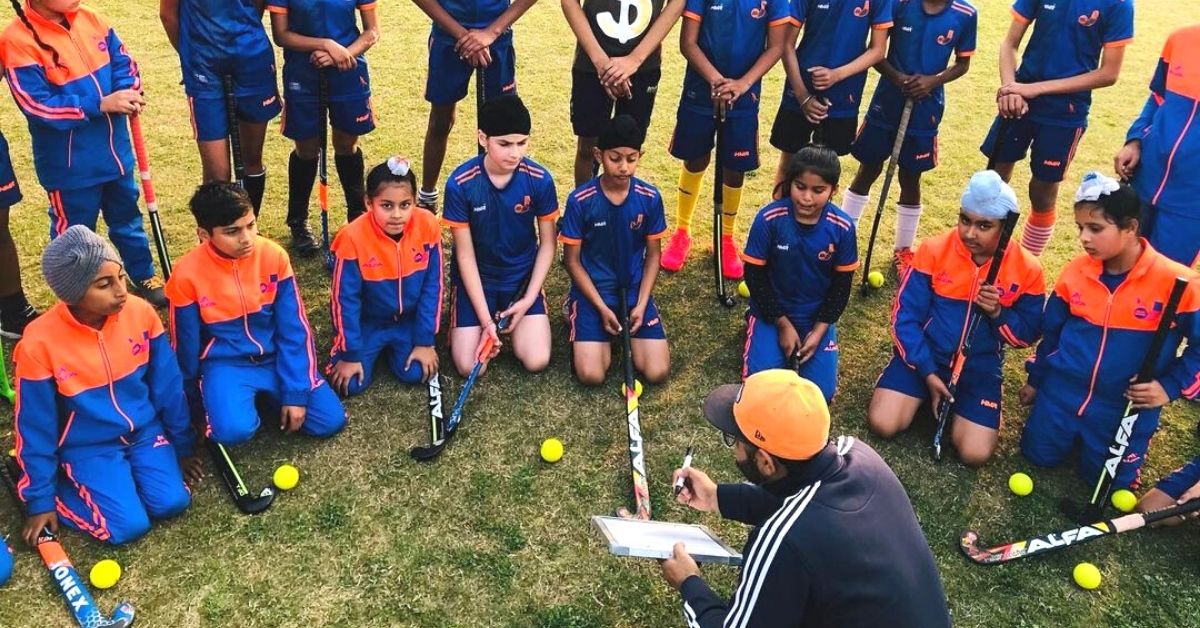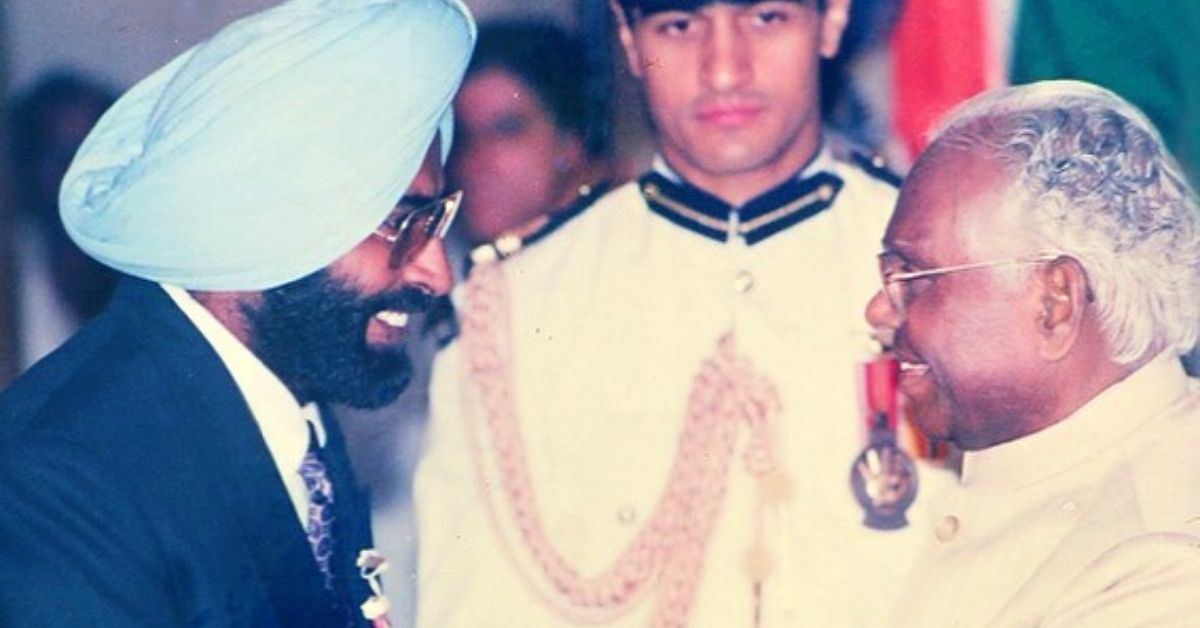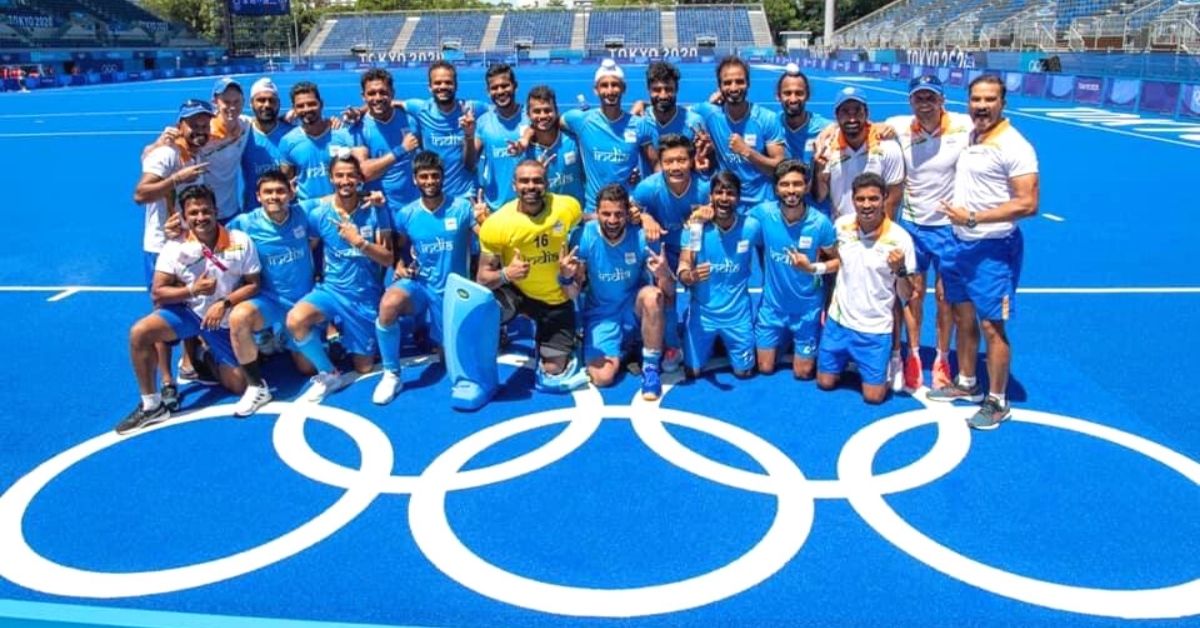Indian men’s hockey team on 5 August created history by breaking a 41-year-old jinx, and clinched the bronze medal at the Tokyo Olympics. The thrilling 5-4 win against Germany provided a window into the glory that India once basked under in the sport. The country had last won a medal in the sport at the Moscow Olympics in 1980.
But here’s the story of a small town in Punjab called Mithapur, which has made relentless efforts to change the landscape of Indian hockey. In fact, a quarter of the team comes from the training grounds of this village, whose soil is considered so precious that hockey players from across Punjab visit here to take some back to their native playgrounds.
A hub of Olympic stalwarts

Interestingly, the town has delivered hockey Olympic champions in the past as well. The village has produced six hockey Olympics stars including Swarup Singh, who represented the Helsinki Olympic team in 1952, Kulwant Singh, who played with Munich in 1972 and the legendary Pargat Singh, the first Indian to captain the Indian team twice, and play in 1988, 1992 and 1996.
In 2021, the three players representing Indian hockey in the Tokyo Olympics from the town are Manpreet Singh, Mandeep Singh and Varun Kumar. Manpreet played in 2012 and 2016 as well.
Speaking with Tribune India, former hockey player Pargat Singh said that not too long ago, the stadium in Mithapur was in shambles and covered under a 3-4 foot layer of sand. He said the rooms had become dens for drug users, and hockey’s legacy here was turning pale. “I asked prominent villagers to find 10-12 good sporting kids to train,” he added. “We found 42 kids. Sukhminder Grewal (international player), Sarabjit Singh Sabi and Amrik Singh, and Surinder Pal pitched in with hockey expertise. Now drugs are history, and hockey is the future,” he said.
So it was Pargat who sanctioned funds from the Government of India while holding the charge of sports director, Punjab. After levelling the stadium at Surjit Hockey Academy, he started looking for talent.

The seeds of the sport were sown in the post-independence era, when the village was no more than an agricultural land without any television entertainment. “The youth took to breaking crooked branches from the trees and played with balls made from crown flower trees to overcome their boredom. They made trees their goalposts,” Kulbir Saini, officer secretary at Hockey Punjab, tells The Better India.
Kulbir says the sport became a part of the culture after locals picked up the game from the British from the nearby cantonment. “However, it was only after Swarup Singh’s representation in 1952 that it held firm ground. Many Army officials supported the sport and set up hockey schools to groom players from neighbouring villages such as Mithapur, Khusrupur and Sansarpur,” he adds.
‘Dawn of a new era’
Recalling the early days of Olympic medalists, Kulbir says that these players were studying in Class 6 when they joined the Surjit Hockey Academy in Jalandhar. “They were groomed for seven years until Class 12, and later stepped up their coaching, winning the Punjab junior national competition in 2017 and the Junior Hockey World Cup organised in Lucknow in 2018, before making it to the Olympics,” he says.
“Their consistent performance and the experience they earned along the way helped them excel in the game,” he adds.
Leaving the past behind, Kulbir says that today, of the 16 member team, eight belong to Punjab, out of which six players, Hardik Singh, Manpreet Singh, Mandeep Singh, Dilpreet Singh, Shamsher Singh and Harmanpreet Singh, come from the Surjit Hockey Academy alone.

Speaking with The Better India, Balwinder Singh, a coach at the academy, says, “The conditions have improved immensely over the years. These days, the players receive modern equipment upon joining the academy, enabling them to create a form and bring discipline to the game. Former Olympic champion Pargat Singh has contributed immensely to revive the game in the region.”
He adds that the village is proud to have given two flag bearers to represent India in the Olympics, with Manpreet holding one during the Tokyo event. “The players need AstroTurf so they can be acquainted with the sport at a young age. At present, they do not get access to it until they reach 16 years of age,” he adds.
The coach says the village’s legacy of churning out Olympic players should continue without hurdles. “The village has given three players, and we plan to increase the contribution to six or more during the next Olympics. But only giving players is not the motive,” he says.
Balwinder explains, “Many players join the Indian hockey team, but it is the medal that counts in the end.”
He adds that the men’s hockey team has restored lost glory. “There was a time when the Indian hockey team could not even qualify in the Olympics. But here we are today, with both the men’s and women’s hockey teams excelling and putting up a tough fight against players across the world. It is the dawn of a new era in Indian hockey. India main abhi hockey zinda hain (Hockey is still alive in India),” he says.
Edited by Divya Sethu
No comments:
Post a Comment